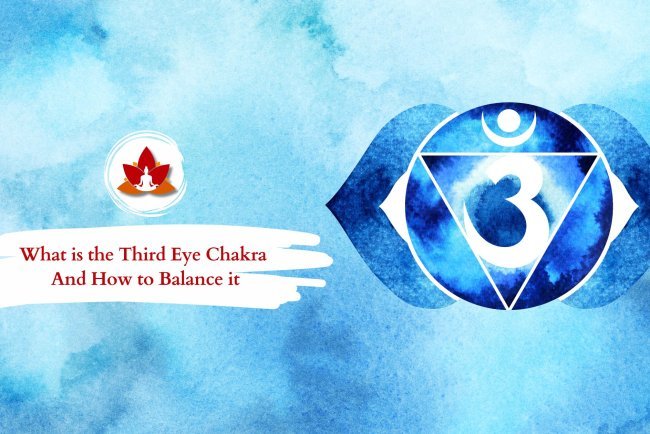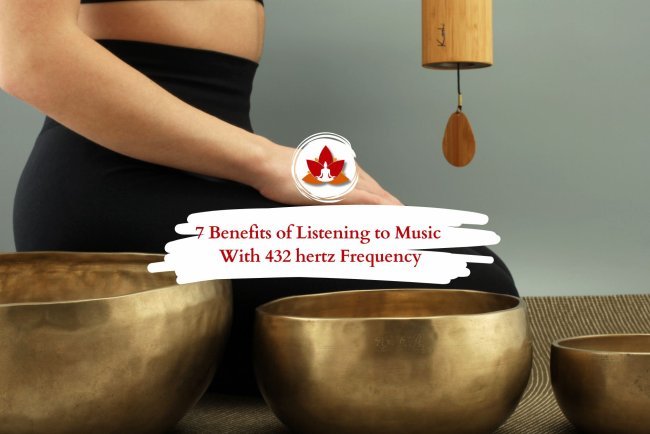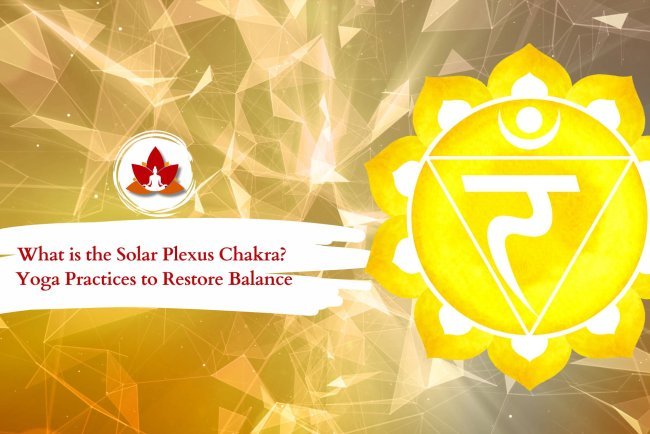Mantras: Definition, Types, Benefits, Spiritual Powers, and How They Work

Mantras are ancient vibrational tools used in the spiritual traditions of Hinduism and Buddhism to concentrate the mind and connect with the divine. Today, they have gained fame in their ability to initiate meditation, healing, and spiritual awakening. Chanted for mental clarity, emotional balance, or spiritual growth, mantras offer powerful benefits that transcend time. As people continue to seek holistic practices to achieve wellness, mantras stand as an ageless activity that helps calm stress, cultivate inner peace, and connect with deeper meaning in life. Learn about mantras and bring some depth and richness to your well-being journey, and spiritual life.
What is a Mantra?
A mantra is a word, sound, or phrase repeated in spiritual practices like meditation and prayer to focus the mind and align one's energy. It is derived from the ancient Sanskrit language: "man" meaning "mind" and "tra" - "instrument" or "tool." Hence, a mantra is often called a "tool for the mind," which helps practitioners achieve a state of mental clarity and inner peace.
For example, in the thought forms of Hinduism, Buddhism, and Jainism mantras are said to invoke divine energies, connect us with higher consciousness, or in achieving specific intentions like healing, protection, or enlightenment. In terms of vibrational quality, the mantras are said to affect the mind, body, and spirit of an individual to bring harmony within them and around them. Whether said out loud or whispered into a nearly inaudible whisper or silently repeated, mantras serve as an incredible medium for keeping the energy on track, realigning them with deep spiritual practice.
Types of Mantras
There are three main types of mantras: Bija or seed, Saguna with form, and Nirguna without form. Each has different qualities and serves to fulfill a different purpose in spiritual practice.
1. Bija Mantras or Seed Mantras
Bija mantras are single-syllable sounds that contain a great deal of vibrational energy. They are often used alone, although in reality, they are at their most potent when also included with other mantras, particularly Saguna mantras, to create even more power. Each Bija mantra has one of the seven chakras assigned to it and relates to a specific Hindu god or goddess, so they are part of the energy system and spiritual emphasis. Examples include "Om" for the crown chakra and "Lam" for the root chakra.
2. Saguna Mantras (With Form)
Saguna mantras call the name or form of a particular deity, which in turn will personalize the mantra and invite divine energy that the form contains. Chanting, it is said, calls forth the personification of the deity into being so the practitioner can connect directly with him. Mantras are widely used in devotional practices, and most often they are found in Bhakti Yoga. Examples include "Om Namah Shivaya" for Lord Shiva and "Om Shreem Mahalakshmiyei Namaha" for Goddess Lakshmi.
3. Nirguna Mantras (Without Form)
Nirguna mantras, derived from ancient Vedic texts, are older than any of the three types. Nirguna mantras do not call upon any particular deity or personalized attribute of God and therefore are much more abstract and difficult to interpret. These mantras relate to the universal truths of yogic philosophy and are said to encompass all of creation. They require a strong, focused mind as they are of highly abstract nature and are not recommended for beginners. An example of Nirguna mantra is "Aham Brahmasmi" meaning "I am Brahman" (the ultimate reality).
Benefits of Chanting Mantras
Chanting mantras has been utilized for centuries in all spiritual disciplines, not only as a form of bridging towards the divine but also for its positive effects on the mind, body, and spirit. Scientific studies and ancient wisdom agree on several benefits received from chanting 1. mantras. Here are some major benefits on mental grounds:
1. Sound Mental health
-
The stress is relieved because of the activation of the parasympathetic nervous system.
-
Levels of cortisol stress hormones decline.
-
Promotes concentration, mental clarity, and overall cognitive functioning.
-
Aids in lowering anxiety and raises mindfulness.
2. Emotional Gains
-
Develops emotional balance and positiveness
-
Aids in diverting the mind from all negativity
-
Makes one feel sensitive with emotions of compassion and inner peace.
-
Helps one to get emotional blockages through balance with emotions in them.
3. Physical Benefits
-
Improves the condition of blood pressure and promotes healthy heart functions
-
Aids in increasing breathing and lung powers through rhythmic breathing patterns
-
Synchronizes breath and rhythm, which reduces the rate of heartbeat.
-
Aids in reducing blood pressure or hypertension and generally facilitates physical relaxation
4. Spiritual Benefits
-
This helps the individual connect to higher consciousness and deeper meditation.
-
It produces vibrational frequencies that resonate with the universal energy.
-
Brings spiritual awakening and connection with divine power.
-
Helps to amplify one's ability to tap into the source of inner wisdom and spirituality.
The Spiritual Powers of Mantras
Mantras are not only used for focusing and meditation but also to unlock powerful spiritual powers. The vibrational energy emitted by chanting mantras is believed to resonate with universal vibrations, which will lead the individual to higher states of consciousness and even open up roads for deeper explorations in the spiritual realm.
How Mantras Are Supposed To Tap Into Spiritual Energies:
1. Vibrational Increase
Mantras, sacred sounds such as "Om," are believed to elevate a person's vibrational frequency so that one is in alignment with the positive, high-frequency energy of the universe. Such vibrations move an individual toward a consciousness that produces higher inner peace and spiritual awareness. A higher vibration can create clear points of view as well as emotional balance.
2. Protection and Purification
Some mantras are even chanted to achieve protection and purification. These will establish a protective barrier of the soul around him. For example, "Om Namah Shivaya" is considered to be divine defensive energies that remove the negative and impure energies from one's mind, body, and soul. In this manner, there is deeper self-awareness and better meditation.
3. Attracting Abundance and Prosperity
Mantras are also done to attract wealth, prosperity, and success. For example, by holding the right positive affirmation or mantras to specific deities, such as the Lakshmi mantra-"Om Shreem Mahalakshmiyei Namaha," one can align their intention with the energy of abundance, calling wealth, prosperity, and well-being in general to his life.
4. Deeper Connections with the Divine or Inner Self
It is believed that constantly repeating mantras will deepen one's relationship with the divine or higher self. This will bring union with the universe, in turn opening up channels for the acquisition of spiritual wisdom and inner guiding insights. Mantras like "So Hum"-"I am That," which in effect allows the practitioner to acknowledge that he already has an existing relationship with all of existence-cultivate intense spiritual awareness.
How Do Mantras Work?
Mantras work under a combination of vibrational energy, repetition, and focused intention:
Vibrational Energy: When you chant mantras, specific sound vibrations flow through the body and inside your mind. This further assists in balancing the energy centers, or chakras, and brings peace within. If you chant a mantra called "Om", then it connects you to the universal energy and brings that soothing impact.
Power of Repetition: The more mantras are repeated, the more power it derives because it sets up a vibration both for your subconscious mind and nervous system, lowering some levels of stress as well as helping focus. It also allies your energy with that of your intentions and clears your head mentally.
Intent and Concentration: Mantras are most powerful when they accompany a strong intent. Focus your mind on something by trying to manifest it; by using a mantra, you let the energies inside it work toward that goal-healing, protection, or personal development.
Commonly Used Mantras
Om
Om is the omnipresent creation sound used to represent the holistic 'oneness' of the universe, and it's, in fact, the word most chanted in yoga for realizing a higher consciousness. This is an elementary mantra for meditation to align with a person's spiritual nature and bring inner peace.
Read More: Scientific Evidences of Om Mantra Chanting and its Benefits
Gayatri Mantra
Gayatri Mantra is one of the Vedic chants used for wisdom, enlightenment, and spiritual awakening. It involves divine energy in and through which one can illuminate the thought as well as their soul. This mantra leads to clarity and higher knowledge.
Om Mani Padme Hum
This Buddhist mantra is chanted with a mission to create compassion and invoke the blessings of the bodhisattva of compassion, Avalokiteshvara. It exhibits immense love and compassion towards all fellow beings.
Om Namah Shivaya
Out of the sacred Hindu mantras dedicated to Lord Shiva, "Om Namah Shivaya" is one of the powerful chants, "Om Namah Shivaya"-that helps lead to inner transformation and spiritual growth through its power of purification of the mind and soul in order to transcend the ego but connect to the individual self.
So Hum
"I am That," this mantra means self-realization and connecting the self with the universe. This mantra basically makes the individual self to be identical with universal consciousness, which creates inner awareness and harmony .
Om Gam Ganapataye Namaha
This mantra invokes Ganesha, god with an elephant head. This god is a god of wisdom and good fortune, sought to seek good luck, removing obstacles blocking the way.
Lokah Samastah Sukhino Bhavantu
This is a beautiful Sanskrit mantra that means "May all beings everywhere be happy and free." It is a beautiful prayer of compassion, kindness, and generosity which spreads positive vibes, reminding one of his or her essential goodness.
Mantra Practice Tips for Beginners
Select the Right Mantra
Select the mantra to begin with your personal intent or goal, such as peace, healing, or spiritual growth. The one that is more aligned to the purpose enhances the effectiveness of the mantra.
Proper Pronunciation
Assure that you pronounce the Mantra correctly so that you get all the vibration from the words. The thought is also to get the mastering of pronunciation through recording or through teaching by a teacher, and the vibration benefit will be maximized.
Set an Intention
Before you start to chant, you would want to get clear about what you are trying to achieve from it. Are you seeking clarity, emotional healing, or a deeper tune into your soul connection? If you're clear about what you are trying to achieve, the mantra's influence will be heightened .
Consistency is Key
Develop a daily routine of repeating the mantra with consistency. Use short practice and then gradually extend time as you feel comfortable with the practice.
Aware Breathing
You need to breathe rhythmically corresponding to the rhythm of your mantra. Deep, aware breathing quiets and calms the mind, which allows you to penetrate to the depth of meditation.
Quiet Space
Create a quiet, sacred space for your mantra practice. A peaceful environment free from distractions enhances your focus and connection, allowing you to immerse fully in the practice.
FAQs
1.What is the best time to chant mantras?
The best times to chant mantras are within the Brahma Muhurta, early morning hours or evening at sunset. These have been taken as spiritually potent, but mantras can be performed at a time convenient for you.
2.Should mantras be chanted loudly for their effectiveness?
Mantras can be chanted aloud, whispered, or mentally repeated silently. For deeper meditation, silent repetition is usually preferred while chanting loudly assists in concentration and group practice.
3.For how long should I chant a mantra to gain the benefits?
Continuous practice is the way to go. You can benefit from a 10-20 minutes daily chanting. You will also achieve what you want even with minutes if a bit of time is dedicated daily to chanting. Eventually, you will notice an enhancement of focus, serenity, and spirituality growth.
4.Can one repeat mantras? Is that a religious practice?
Mantras can be used by anyone, regardless of religion or spiritual affiliation. The mantras were created within specific spiritual traditions; however, they could be employed and delighted in for meditation, healing, and personal development purposes by anyone.
5.What if I get it wrong?
The mantra's vibrational power will be enhanced by the correct pronunciation. But what will matter most is your intention and concentration. In time, and with practice, pronunciation will come correct.
6.How will I know if my mantra is working or not?
You will begin to feel positive changes, for instance, a more serene, clear, and focused state. You will then experience inner balance, low stress levels and finally a profound sense of spiritual connection that will show it has some effect on you.
What's Your Reaction?


























